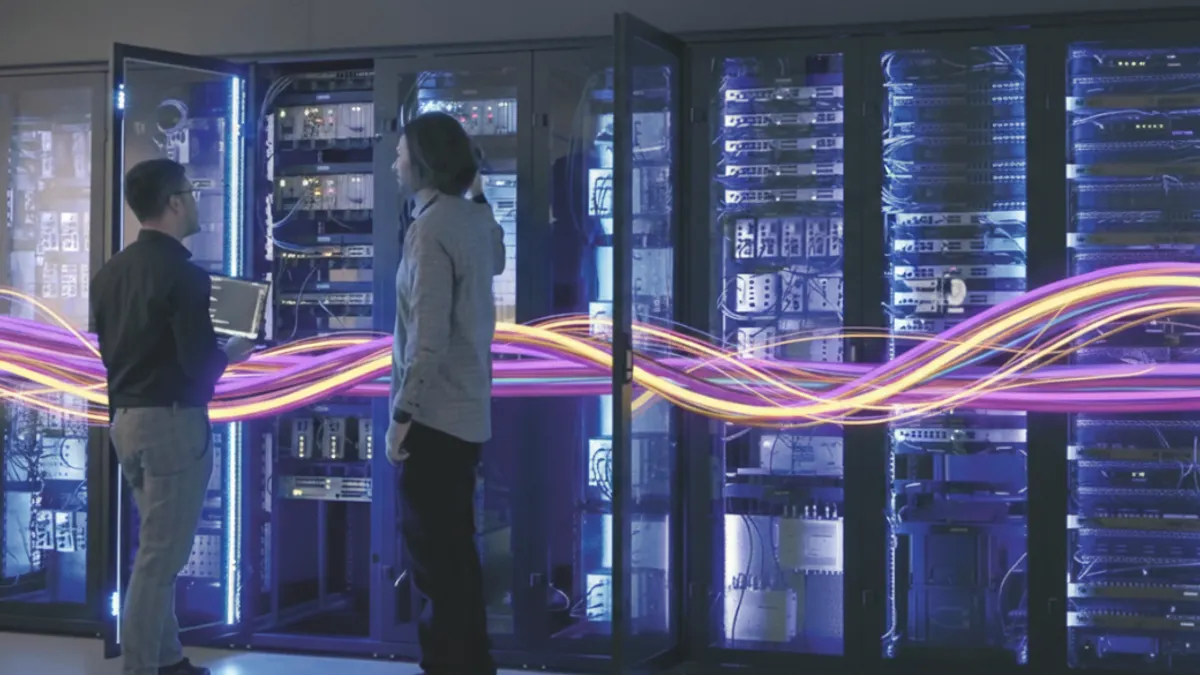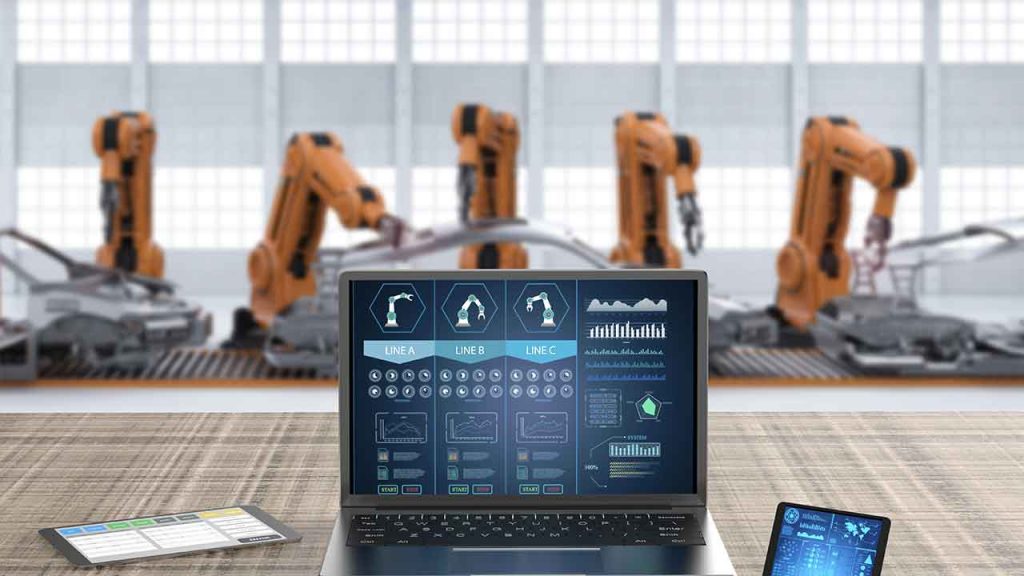4 Things Industry 4.0 11/3/2025

Presented by

Happy November!
Halloween candy wrappers are still on the floor, turkey hasn't even hit the oven, and your neighbor already has a full light display that's visible from space. We get it, Karen—you're excited about Christmas. But can we at least make it to Thanksgiving first?
Speaking of jumping ahead: while retail America skips straight to sleigh bells, the manufacturing world isn't waiting around either. This week brought us AI factories with 20x performance gains, $1.2 trillion in U.S. manufacturing investments, and infrastructure code that actually thinks for itself.
Turns out, the only thing moving faster than your neighbor's decorating schedule is Industry 4.0.
But unlike those premature Christmas lights, these developments are actually worth the early excitement. We've got NVIDIA making two major moves, a survey that finally tells us what's really working in IIoT (not just what vendors want you to hear), and tools that make infrastructure management feel less like herding cats.
Here's what caught our attention this week:
How to Move Your Database Tables Without Breaking Everything (A PostgreSQL Love Story)
Your MES database needs a table moved to another instance. Google's Database Migration Service wants to move everything. You just need to move a few tables. What do you do?
The answer: PostgreSQL's native logical replication. Set up publication/subscription, sync the data, rebuild indexes, and use PgBouncer for near-zero downtime switchover. No vendor tools needed.
Why it matters: Plant floor databases are mission-critical. This lets you migrate specific tables strategically—production data, quality metrics, IoT readings—without taking the whole system offline.
Native PostgreSQL. No extra licensing. No downtime drama.
Read the technical walkthrough →
NVIDIA and Samsung Build an AI Factory (Yes, a Literal AI Factory)

Samsung and NVIDIA just announced they're building an "AI factory"—and this isn't marketing speak. They're actually using AI to manufacture chips, and the results are wild.
The highlights: Samsung's chipmaking platform is getting 20x performance gains in computational lithography using NVIDIA's CUDA infrastructure. They're building digital twins of their global fabs with NVIDIA Omniverse for AI-driven predictive maintenance and real-time decision-making.
Translation: They're simulating entire chip factories virtually, optimizing everything before it hits the physical production line, and using AI to predict equipment failures before they happen.
Why it matters: This is the future of smart manufacturing at scale. Digital twins aren't a pilot project anymore—they're production infrastructure at one of the world's largest chipmakers. If you're wondering whether Industry 4.0 technologies actually deliver ROI, here's your proof: 20x performance gains in computational lithography.
Plus, this partnership extends beyond manufacturing—Samsung's leveraging NVIDIA tech across smartphones, robotics, and custom semiconductors.
The bottom line: When the world's leading chipmaker says digital twins and AI-driven manufacturing work, it's time to pay attention.
Why Your Industry 4.0 Pilot Worked Great (But Never Scaled)

Here's a story you've probably lived: Your team ran an Industry 4.0 pilot. It worked beautifully. Everyone was excited. Then... crickets. Six months later, it's still just a pilot.
Welcome to "scale fail"—and you're not alone.
The numbers: According to Accenture's study of 600 manufacturers, the average digital maturity score is just 39 out of 100. Most companies have moved past proof-of-concept but are stuck before achieving real ROI.
Our Take:
Here's what the consultants won't tell you: It's not about the technology. It's about three fundamental problems:
1. You don't have a digital strategy (the WHY) "I want to be digital" isn't a strategy—it's a buzzword. If you can't articulate why you're pursuing digital transformation and what specific business outcomes you're after, you'll chase every shiny object and scale nothing. Define your why first, or fail fast.
2. You don't have the right architecture Bolt-on solutions and point-to-point integrations don't scale. Period. This is why we're big believers in Unified Namespace (UNS)—a proper data architecture that creates a single source of truth across your entire operation. Without it, every new system becomes another integration nightmare.
3. You don't have the right partner Here's the dirty secret: Some integrators want you to stay dependent. They go deep, stay long, and create systems only they can maintain. The right partner trains your team to own the solution, then gets out of the way.
The bottom line: Technology is easy. Strategy, architecture, and partnerships are hard. Get those right, and scaling happens naturally.
A Word from This Week's Sponsor

Speaking of the right architecture... (see what we did there?)
If you just read the previous article and thought "yep, that's us—we've got data chaos and systems that don't talk to each other"—meet Fuuz.
Fuuz is the first AI-driven Industrial Intelligence Platform built specifically to solve the data nightmare that's holding manufacturers back. It unifies your siloed systems—MES, WMS, CMMS, whatever alphabet soup you're running—into one connected environment where everything actually talks to each other.
Why it matters:
- Multi-tenant mesh architecture: Deploy on cloud, edge, or hybrid without rebuilding everything
- Low-code/no-code + pro-code: Your business users and developers can both build fast
- Hundreds of pre-built integrations: No more custom integration hell
- Unified data layer: Real-time analytics and AI-powered operations actually work when your data isn't scattered across 47 systems
Whether you're extending existing infrastructure or building new capabilities, Fuuz gives you the foundation to scale industrial applications without the usual pain.
Works for both discrete and process manufacturing. No complete tech stack rebuild required.
What 446 IIoT Professionals Actually Said About What's Working (and What's Not)

Forget the vendor whitepapers and consultant decks. Someone finally surveyed 446 real IIoT professionals about what's actually working in industrial deployments.
The highlights:
Unified Namespace is winning: UNS adoption is rising fast as the go-to architecture for real-time data unification across OT/IT systems. (We told you so in article #3.)
AI is moving from hype to production: Companies are successfully integrating AI into IIoT ecosystems—particularly for predictive maintenance where the ROI is crystal clear.
The ROI reality check: The survey reveals honest data about implementation challenges, timeline expectations, and where companies are actually seeing returns vs. where they're still struggling.
What people are prioritizing: Real-world insights into which use cases are getting budget, which technologies are delivering, and what practitioners wish they'd known before starting.
Why it matters: This isn't aspirational—it's operational. When you're deciding where to invest your digital transformation budget, data from 446 peers who've already been through it beats marketing materials every time.
The bottom line: Learn from those who've already made the mistakes so you don't have to.
Read the full survey results →
Learning Lens

Advanced MCP + Agent to Agent: The Workshop You've Been Asking For
If you've been building with MCP and wondering how to take it to the next level—multi-server architectures, agent orchestration, and distributed intelligence—this one's for you.
On December 16-17, Walker Reynolds is running a live, two-day workshop that goes deep on Advanced MCP and Agent2Agent (A2A) protocols. This isn't theory—it's hands-on implementation of the patterns that enable collaborative AI systems in manufacturing.
Here's what you'll build:
- Multi-server MCP architectures with server registration, authentication, and message routing
- Agent2Agent communication protocols where specialized AI agents collaborate to solve complex industrial problems
- Production-ready patterns for orchestrating distributed intelligence across factory systems
The Format:
- Day 1: Advanced MCP multi-server architectures (December 16, 9am-1pm CDT)
- Day 2: Agent2Agent collaborative intelligence (December 17, 9am-1pm CDT)
- Live follow-along coding + full recording access for all registrants
Early Bird Pricing: $375 through November 14 (regular $750)
Whether you're architecting UNS environments, building agentic AI systems, or just tired of single-server MCP limitations, this workshop gives you the architecture patterns and implementation playbook to scale.
Why it matters: MCP is rapidly becoming the backbone for connecting AI agents to industrial data. Understanding how to orchestrate multiple servers and enable agent-to-agent collaboration isn't just a nice-to-have—it's the foundation for autonomous factory operations.
Byte-Sized Brilliance
The average modern car contains about 30,000 parts. Henry Ford's Model T? Just 5,000 parts.
But here's the kicker: Toyota can build an entire Camry—from stamped metal to driving off the assembly line—in just 18 hours.
Meanwhile, Ford's original Model T production line took 12 hours and 30 minutes back in 1913... and that was considered revolutionary at the time. Ford's assembly line reduced production time from 12 days to half a day.
So in 110 years, we've gotten manufacturing down to 18 hours for something 6x more complex (airbags, computers, emissions systems, heated seats, and about 25,000 more parts). That's what happens when you combine lean manufacturing with robotics, automation, and—you guessed it—Industry 4.0.
Your great-great-grandparents would be absolutely floored.
|
|
|
|
|
|



Responses